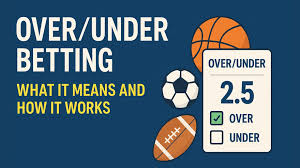Welcome to the world of sports betting, where understanding odds is fundamental to making informed wagers. If you’re new to betting or transitioning from one betting system to another, navigating the different formats can be confusing. The simplest way to read Asian, European, and Over/Under tỷ lệ nhà cái odds is essential knowledge for bettors aiming to succeed across various betting markets. This article aims to simplify these odds formats, explain their differences, and provide practical guidance to help you interpret them effectively.
Understanding the Basics of Betting Odds
Before diving into specific formats, it’s important to grasp the core concept of betting odds. Odds reflect the probability of an event happening and determine the potential return on your wager. Depending on the region or betting platform, odds are presented differently, but they all serve the same purpose: to inform your betting decision.
The three main types of odds formats are Asian, European, and Over/Under. Each has unique characteristics, and knowing how to interpret them can significantly improve your betting experience.
Let’s start by exploring what each format entails and the best ways to read them.
Asian Odds: A Deep Dive
Asian odds, also known as Asian Handicap odds, are popular in Asia and are widely used in soccer betting. They aim to level the playing field by giving one team a virtual advantage or disadvantage, reducing the likelihood of a draw and offering more betting options.
What Are Asian Odds?
Asian odds are expressed in decimal format, but with a twist—sometimes they appear as a positive or negative number, indicating the amount you can win relative to your stake. The core idea is to mitigate the chance of a draw, favoring either team or a specific outcome.
How To Read Asian Odds
Asian odds can be presented in different ways:
- Positive (+): Indicates the amount you will profit on a winning bet per unit staked. For example, +0.75 means you will earn 0.75 profit for every 1 unit staked, if the outcome is favorable.
- Negative (−): Shows how much you need to wager to win 1 unit. For instance, −0.75 indicates you must stake 0.75 units to win 1 unit.
Key Points About Asian Odds
- They often include fractional components like 0.25, 0.5, or 0.75, representing partial handicaps.
- When betting on Asian odds, outcomes can be split into “win,” “push,” or “loss,” depending on the final score and handicap.
Example of Asian Odds
| Outcome | Odds | Explanation |
| Team A +0.25 | Decimal: 0.75 | If Team A wins, you win the full amount; if it’s a draw, you get half your stake back. |
| Team B -0.75 | Decimal: -0.75 | Wagering on Team B requires a 0.75 stake; if they win, you get paid in full. |
European Odds: Simplified and Straightforward
European odds, also called decimal odds, are among the most popular worldwide, especially in Europe. They are straightforward and easy to understand, making them a great starting point for beginners.
What Are European Odds?
European odds are expressed as a decimal number that shows the total payout you will receive from a winning bet, including your original stake.
How To Read European Odds
- Decimal number format: The decimal represents the total payout per unit wagered. For example, odds of 2.50 mean you will receive 2.50 units for every 1 unit bet if you win.
- Calculation of profit: To calculate your profit, subtract 1 from the decimal. For example, 2.50 – 1 = 1.50 profit per unit staked.
Example of European Odds
| Outcome | Odds | Explanation |
| Win (Team A) | 1.80 | For a €100 bet, you receive €180 total (€80 profit). |
| Draw | 3.20 | The total payout is €320 for a €100 bet. |
Summary
European odds are transparent and user-friendly, making them ideal for quick calculations and betting decisions.
Over/Under Odds: A Popular Strategy for Total Goals or Points
Over/Under odds are commonly used in sports like soccer, basketball, and hockey. They focus on predicting whether the total combined score or points will be over or under a pre-set line.
What Are Over/Under Odds?
These odds set a line (e.g., 2.5 goals), and bettors bet on whether the actual total will be higher (“Over”) or lower (“Under”) than this number.
How To Read Over/Under Odds
- They are typically displayed in decimal format with associated odds for “Over” and “Under.”
- The payout depends on which side you choose and the odds attached.
Example of Over/Under Odds
| Line | Over Odds | Under Odds | Explanation |
| 2.5 Goals | 1.90 | 1.90 | Wager €100 on Over 2.5, you win €190 if more goals scored. |
Tips for Using Over/Under Odds
- Choose a line where you think the actual total will be distinctly over or under the set line.
- Consider team form, previous scores, and other factors to make an informed decision.
Comparison Table of Odds Formats
| Format | Presentation Style | Key Benefit | Typical Use Case |
| Asian Odds | Positive/Negative numbers, fractional elements | Minimizes draws, offers partial bets | Soccer, Asian markets |
| European Odds | Decimal (e.g., 2.50) | Simple calculation of payouts | Global sports betting, casino games |
| Over/Under | Decimal + side indicator | Focus on total points/goals | Sports like soccer, basketball, hockey |
How to Apply These Odds in Practice
Getting comfortable with reading odds opens up more betting opportunities and strategies. Here are some step-by-step tips:
- Identify the Bet Type: Decide if you’re betting on the outcome (win/draw/lose), total points, or handicap.
- Check the Odds Format: Confirm whether the odds are Asian, European, or Over/Under, and read them according to their respective rules.
- Interpret the Odds: Use the explanations above to understand your potential profit and risk.
- Make an Informed Choice: Combine your knowledge of the odds with team/player analysis.
- Calculate Expected Return: Multiply your stake by the odds to see your potential payout.
Troubleshooting Common Problems
- Confusion with fractions or decimals: Use simple calculators or odds conversion tools available online.
- Unfamiliar terminology: Consult reliable guides or betting platforms’ help sections.
- Inconsistent odds formats: Stick to a standard format until you’re comfortable switching between them.
Conclusion
The simplest way to read Asian, European, and Over/Under tylekeo.black odds lies in understanding their unique presentation and calculation methods. Asian odds are widely used for their partial betting options and draw elimination, European odds make payout calculations straightforward, and Over/Under odds focus on total combined results in various sports. By recognizing and interpreting these formats correctly, bettors can make smarter betting decisions and maximize their chances of success. With practice, reading odds becomes an intuitive skill that enhances your overall betting strategy—empowering you to approach betting markets confidently and competently.

